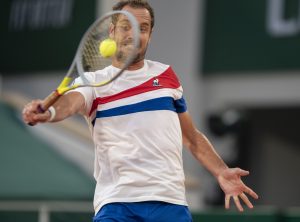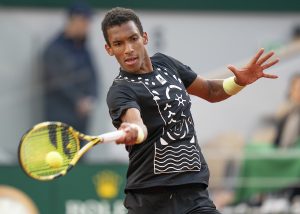A summer just doesn’t feel complete without Wimbledon. And as all tennis fans know, one of the biggest moments of the schedule for the last 15 years has been an Andy Murray match on Centre Court. Whether it’s for drama, entertainment, or just pure skill, his exploits – played in front of his home fans – have become unmissable for the crowds of supporters.
But this year, there was one big difference. As the Briton fought tooth and claw against the seismic serving of American John Isner on Wednesday evening, the crowd shots revealed a surprising – and disappointing – number of empty seats. It seems Murray’s exploits were missable for some. And truth be told, it’s not a one-off event here.
Attendance this year has been a problem. The first three days of the Championships all saw the lowest attendance since 2007, excluding COVID and rain-related reasons. Overall, the crowds are down 11% from 2019. The stats won’t be pretty reading for the organisers, especially as they had predicted record crowds before the tournament began.
Why the sudden disappearance? On the face of it, fans should be clamouring at the gates to get in. After all, this is the first ‘normal’ Wimbledon since 2019, with the 2020 event cancelled and last year’s tournament held with at 50% capacity (though the show courts themselves had full capacity for the semifinals and finals). With so many people starved of live tennis, this year should be a tremendous comeback for the tournament, worthy of any Andy Murray five-setter. So why the Wimbledon low crowds?
Several reasons have been touted for the mysterious absence of so many punters. The UK’s difficult current COVID situation is one possibility. This wave that has swept up three of the players here, including last year’s finalist Matteo Berrettini. There is also the cost-of-living crisis gripping people’s wallets, though it should be said that many of this year’s tickets were initially bought for the 2020 tournament, and so were not recent purchases.
Another issue, this time specific to show courts, is the apparent difficulty of ticket resale. With all tickets now digitalised, a once-simple paper process has come unstuck with long queues grappling with the technology at the resale kiosks, all while the tournament’s premier seats lie empty.
The apparent elusiveness of corporate hospitality guests – a recurring topic of debate here even in past years – is also worth mentioning. Many vacant seats on Centre Court have been around the Royal Box and usually reserved for these guests or even members of the All England Club and the Lawn Tennis Association themselves. However, this doesn’t explain the relative quietness of the overall grounds.
Amid so much speculation, it’s hard to put a finger on the woes of the Wimbledon low crowds. None of these reasons offer an easy solution, though some may be more palatable to the tournament organisers than others. Issues like ticket resale can obviously be technically fixed. But some problems are harder to solve.
The most uncomfortable possibility is this – the tennis itself. Is it possible that the scheduling has lost some lustre this year? We’ve had the pleasure of seeing Novak Djokovic and Rafael Nadal progress to round three. But in truth there aren’t many big names left. Some were knocked out in the early rounds, while others never made it in the first place.
Roger Federer, one of the biggest draws in the sport and certainly the most iconic here at SW19, has missed the tournament for the first time in 23 years. The ban on Russian and Belarussian players has deprived the tournament of some recognisable names. Now, the early exits of Serena Williams and Murray are big losses for an event desperate to attract casual fans. With some of the game’s biggest icons nearing the end of their careers, their absence will soon be permanent. This will leave a big hole in the schedules.
Time will tell if Wimbledon low crowds increase for the rest of the tournament. The organisers will desperately hope so, because this unwelcome trend does not have easy answers.
Main photo:
Embed from Getty Images






